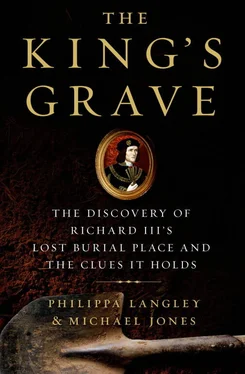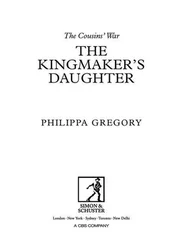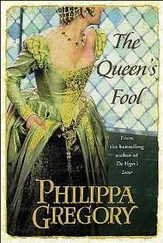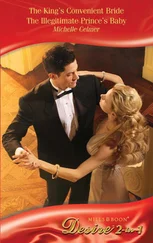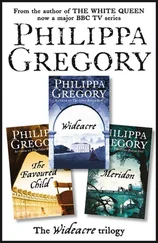The remaining funding of £716 from the International Appeal was paid to ULAS at the end of the dig for costs including the exhumation.
The tomb designers, Dr David and Wendy Johnson, had brought in graphics specialist Joseph Fox from Lost in Castles. With the tomb design nearly ready, Fox was working on the final renders, while award-winning local sculptor Graeme Mitcheson was interested in taking on the tomb commission. And Michael Ibsen (son of Joy), a furniture maker who sources his wood from the estate of the Prince of Wales and lives in London, said he would be honoured to make a coffin for his ancestral uncle, King Richard III.
On 6 August 2012, at the pre-dig meeting, Richard Buckley confirmed the location of the first two trenches in the Social Services car park. The dig would begin on 25 August, which I told the team would be the anniversary of Richard III’s interment in the Greyfriars. The media pack was ready. Annette Carson had stepped in to organize it, but LCC admitted they were short-staffed and not ideally placed to handle communications. However, Leicester University, our new partner, with much experience in the media, asked to take it on.
Three and a half years after the first meeting in the Cramond Inn, Edinburgh, my search in Leicester for the grave and mortal remains of King Richard III was on!
ALINE OF horsemen is drawing up in the mid-morning sun. There is a wind blowing – enough to ruffle banners and surcoats, the loose silk fittings worn by knights over their armour. In the vicinity of this small cavalry force – several hundred strong – all is relatively quiet. But further away the sounds of battle can clearly be heard. There are shouts of command, delivered by call or trumpet blast, the guttural cries of men fighting at close quarters, the din of weapons striking against plate armour, the shrieks of the dying and the wounded. In the gently rolling fields of Leicestershire crops have been ripening for harvest. Now they lie kicked and trampled as bands of warriors surge towards each other, colliding with brutal impact. The date is 22 August 1485.The clash of arms – soon to be commemorated through the name of its nearest market town – is Bosworth Field.
The horsemen have drawn up in formation around a banner bearing the royal arms of England. Its colours are unfurling in the breeze. The leader of this force is the anointed ruler of the realm – King Richard III. His plan is to launch a bold cavalry charge, skirting around the fighting to attack the vulnerable rearguard of his opponent Henry Tudor. Richard wishes to seek out his challenger, engage him in personal combat, and slay him. The stakes are high. If his mounted charge is successful the battle will be brought to a close with a resounding victory. If it fails, it will end in humiliating defeat. And every mounted man grouped around the king knows this.
Richard III has ruled the kingdom of England for a little over two years. He is thirty-two years old. His reign has been marred by rebellion, and doubts about the legitimacy of his rule. He seeks to end all plotting through a decisive vindication of his regal authority on the battlefield. His men watch him intently. His face is drawn yet determined. He has slept badly and complained of nightmares where he was assailed by demons. But now those nightmares are put aside. He has drawn up his forces with steely resolve to block the line of advance of his opponent across the Roman road to Leicester and bring him to battle. And battle has now commenced.
Still the line of horsemen waits. The king dons his surcoat, with its richly coloured arms of England, lifts his battle helmet – with a crown welded to it – and places it upon his head. He pauses for a moment, and then urges his horse forward. His men immediately respond. The whole line moves in close formation, first at a walk, then a trot, and finally – as it gathers speed – surging past the lines of battling soldiers at a gallop. As the horses and their armoured riders gather momentum the earth shudders – and all feel its impact. The Battle of Bosworth is nearing its climax, and for a moment every soldier on that field of combat stands transfixed by this mighty charge.
In the opposing camp there is pandemonium. Richard’s challenger, Henry Tudor, has positioned himself in the rearguard, well back from the main area of the fighting. He has never fought in a battle and hopes to avoid any action. But now a huge dust cloud spumes above the mounted force charging straight for him. A tornado is about to hurl itself into his line of soldiers. Tudor’s men are also on horseback – and they will have to brace themselves against the impact of this terrible assault. Orders are desperately called out, but the thunderous approach of Richard’s riders makes it almost impossible to hear them. But in the growing din Tudor jumps off his horse and is surrounded by a small scrum of followers, wielding pikes and whatever other weapons are at hand. This is the last cavalry charge to be led by a King of England. And his challenger is to meet it cowering on the ground.
If Richard III had won this battle, killed his opponent and through this victory laid the foundations for a long period of rule, there is no doubt that his charge would have been given an enthusiastic write-up in the sources of the day. But Bosworth was a Tudor victory, and Richard’s death in battle brought their own dynasty on to the pages of our history books. It is hard to imagine our island story without the Tudors featuring prominently within it. Yet history is written by the winners. The Tudors – in public at least – had their own take on the battle story, and it would do no favours to Richard In the telling.
By the end of the reign of Queen Elizabeth I, William Shakespeare, in one of his most famous history plays, gives us an altogether different ending to this headlong dash. In it, we find that Richard is now alone. He is still hunting out his opponent, but has lost the horse that carried him to his foe. He cries out: ‘A horse, a horse, my kingdom for a horse!’ One of his followers briefly appears, urging him to flee. But the king’s reply is grimly resolute:
I have set my life upon a cast,
And I will stand the hazard of the die…
And then once more the terrible refrain: ‘A horse, a horse, my kingdom for a horse!’
Shakespeare was of course unable to enact the full sequence of these events within the confines of a late sixteenth-century theatre. But there was a real poignancy to Richard’s cry. For an Elizabethan audience a cavalry charge – even one obliquely referred to rather than enacted on stage – would have seemed a relic from a bygone age. Even in the late Middle Ages, full-scale mounted charges were unusual in English warfare. The English custom was to dismount and fight on foot, while cavalry actions took place in the opening preliminaries to battle, or in the rout that would signify their end. Yet to deliver a coup de grâce with a massed onslaught of horsemen was regarded – in the chivalric literature and practice of the time – as the finest way to win a battle.
By Shakespeare’s day the grandeur of such an intention had become lost under a mound of hostile propaganda. In the version of Henry VII’s court historian Polydore Vergil, Richard’s charge was portrayed as an impulsive and desperate act, prompted by rage and the betrayal of those around him, who showed little stomach for the fight. Shakespeare hints at this in a series of powerful vignettes. But from a military point of view, Richard’s plan required considered foresight, both in the logistics of his planning and his actual battle preparation.
His charge was unlikely to have been the product of pure impulse, for his line of horsemen had to be readied in advance. A man in the plate and mail armour frequently used in the Wars of the Roses – the civil war that by August 1485 had already raged for thirty years – needed time to position himself and get into formation. In 1485 knights in full plate armour – the most advanced military technology of its time, when warriors were garbed in closely interlocking pieces of plate, providing the best possible protection against missile and weapon attack – would also need time to gather themselves. Such measures would not be undertaken whimsically, or on the spur of the moment. It is far more likely that Richard had carefully prepared for their use. He wanted to strike at his challenger with the power and velocity of a hammer blow.
Читать дальше
